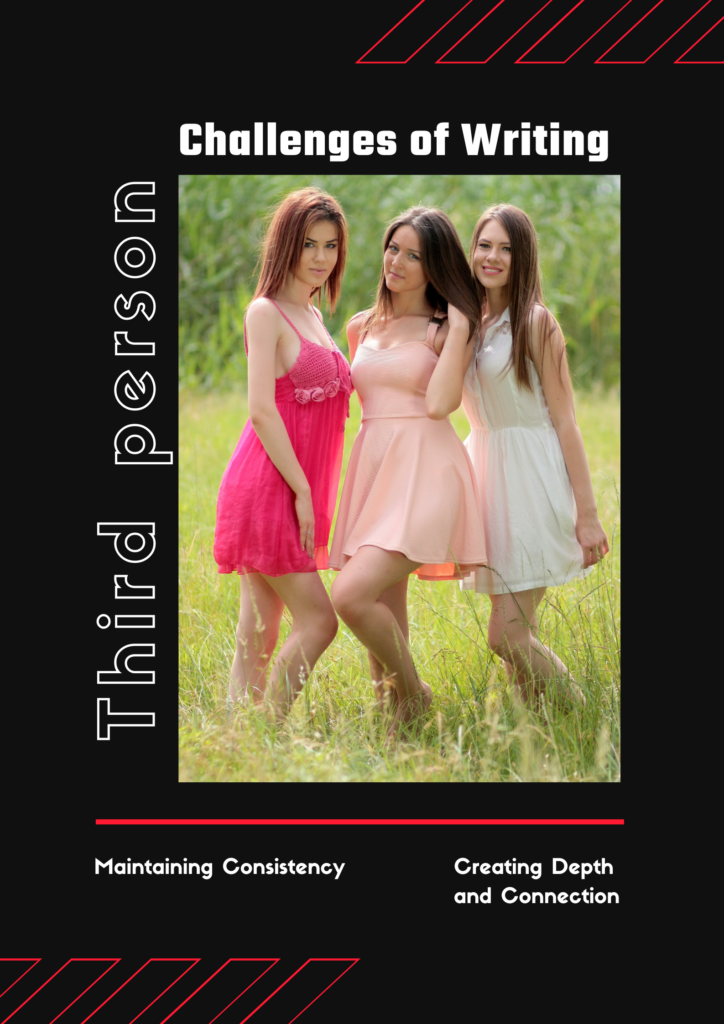
The third person, a grammatical perspective that significantly influences our communication, particularly in writing, is distinct from the first and second person. While the first person refers to the speaker, and the second person directly addresses someone else, the third person is about creating a narrative distance. This distance is crucial in maintaining formality and impartiality, as it allows for a more objective or detached view.
What is the Third Person?
At its core, the third person refers to a point of view in which the narrator or writer discusses characters or subjects without including themselves or the reader directly. It is a perspective that involves the use of pronouns like “he,” “she,” “it,” “they,” “them,” “their,” “his,” “hers,” “its,” and “theirs.” This grammatical approach is essential in various forms of writing, from storytelling to academic and formal writing.
The Role of Pronouns and Verb Conjugation
From the third-person perspective, pronouns are key indicators. When speaking in the third person, the subject is always someone other than the speaker or the listener. For instance:
- First-person: “I went to the store.”
- Second person: “You went to the store.”
- Third person: “He went to the store.” (singular) or “They went to the store.” (plural)
Corresponding changes in verb conjugation accompany this shift in pronouns. The verb forms are adjusted based on the subject’s number (singular or plural) and the person (first, second, or third person).

Uses of Third Person in Writing
The third-person perspective is versatile and is applied across various types of writing. Each use of the third person serves a distinct purpose, contributing to the tone, style, and clarity of the text. Its adaptability makes it a valuable tool for writers.
Narrative Writing
The third-person point of view is commonly employed in novels, short stories, and other forms of storytelling. It allows the narrator to explore multiple characters’ thoughts, feelings, and actions without becoming personally involved in the story. This perspective can vary between an omniscient point of view, where the narrator knows everything about all characters, and a limited perspective, focusing on just one character.
For example:
Also Read: Revo Technologies Murray Utah: Premier IT Solutions and Computer Store
- Omniscient third person: “She knew that he was hiding something, even though he tried to act normally.”
- Limited third person: “He walked down the street, unaware that someone was watching him.”
The third person in narrative writing creates a layer of separation between the narrator and the characters, providing readers with a broader view of the story’s world.
Academic Writing
In academic texts, the third person is a preferred choice as it helps maintain an objective tone. Research papers, essays, and scholarly articles use the third person to present information and arguments without the author’s personal bias. This approach adds credibility to the writing by focusing on facts and evidence rather than personal opinions.
For instance:
- Third person in academic writing: “The study indicates that the results are consistent with previous research.”
This use of the third person keeps the writing formal and impersonal, which is crucial in academic contexts where objectivity is paramount.

Formal Writing
Business letters, reports, and other formal documents also commonly use the third person. This perspective helps maintain a professional tone and ensures that the communication remains clear and respectful. By avoiding the first or second person, the writing stays focused on the subject matter rather than the individuals involved.
For example:
- Third person in formal writing: “The report will be submitted by the end of the week.”
Using the third person in formal writing eliminates any ambiguity and presents the information directly and professionally.
The Advantages of Using Third-Person
The use of the third person in writing offers several advantages that enhance the overall effectiveness of the communication. These benefits include objectivity, flexibility, and clarity.
Objectivity
One of the most significant advantages of the third-person perspective is its ability to convey information objectively. By focusing on subjects other than the speaker or reader, the writing becomes more neutral and impartial. This is particularly important in academic and formal writing, where personal opinions should not overshadow the facts. This objectivity ensures that the audience is well-informed and free from bias.

Flexibility
The third person allows for greater flexibility in storytelling and description. Writers can shift between characters, describe scenes from multiple angles, and explore different perspectives within the same narrative. This flexibility enriches the writing, making it more dynamic and engaging for readers. It keeps the audience intrigued and eager to explore different angles of the narrative.
Clarity
Writing in the third person often results in clearer communication. The separation between the writer and the subject helps to eliminate confusion and ensures that the focus remains on the information being presented. This clarity is essential in both academic and formal writing, where the primary goal is to convey information effectively. It reassures the audience and instills confidence in the information being presented.
Challenges of Writing in the Third Person
While the third-person perspective offers many advantages, it also presents certain challenges that writers must navigate.
Maintaining Consistency
One of the primary challenges of writing in the third person is maintaining consistency throughout the text. Switching between perspectives can confuse readers and disrupt the flow of the writing. Once the third-person perspective is established, it is crucial to stick to it to avoid any ambiguity.
Creating Depth and Connection
Another challenge is creating a deep connection between the reader and the characters or subject matter. The third-person perspective can sometimes create a sense of detachment, making it harder for readers to empathize with the characters. Writers must carefully craft their narratives to ensure that readers remain engaged and emotionally invested in the story.

Conclusion
The third-person perspective is a powerful tool in writing, offering a unique blend of objectivity, flexibility, and clarity. Whether used in narrative, academic, or formal writing, the third person enhances the effectiveness of the communication by maintaining a clear separation between the writer, the subject, and the reader. While it presents certain challenges, such as maintaining consistency and creating depth, the third person remains an essential perspective in the writer’s toolkit.
By understanding and mastering the use of the third person, writers can elevate their work, making it more engaging, professional, and impactful. The third person is not just a grammatical choice; it is a strategic decision that shapes the way information is conveyed and received.
